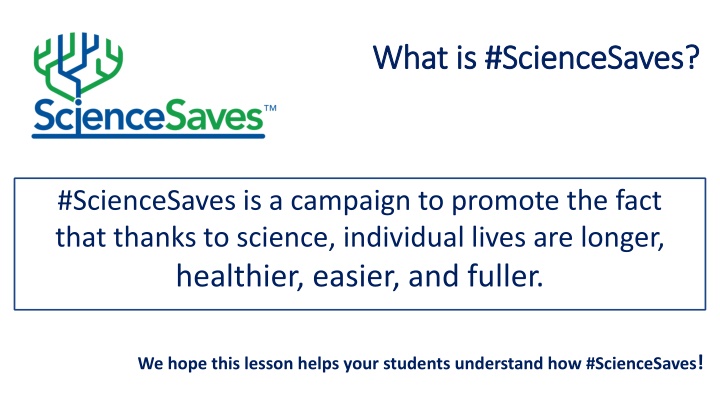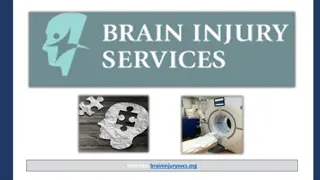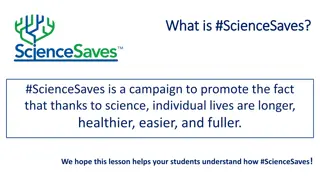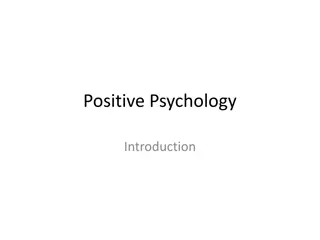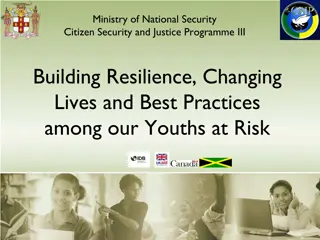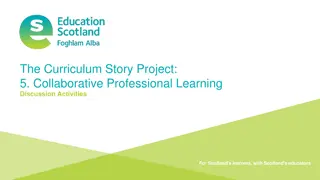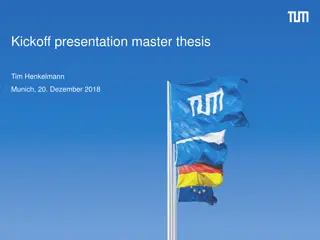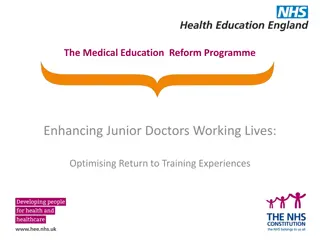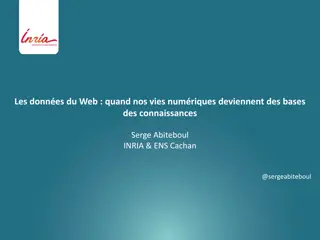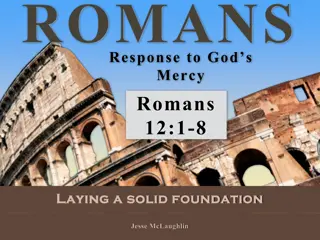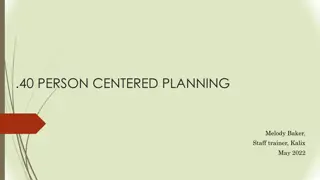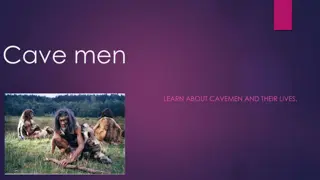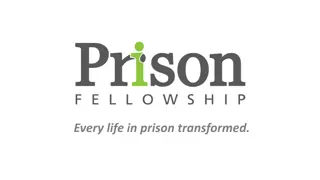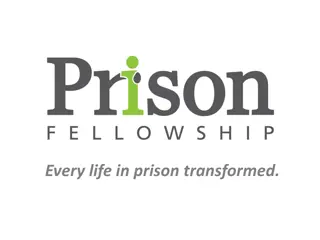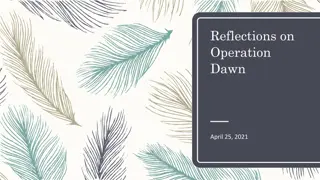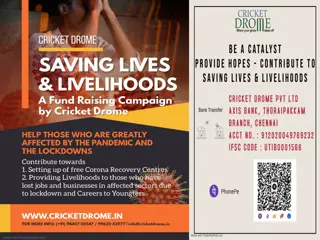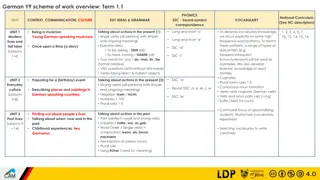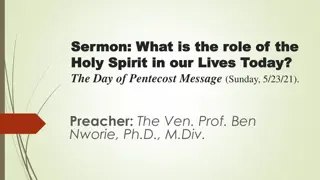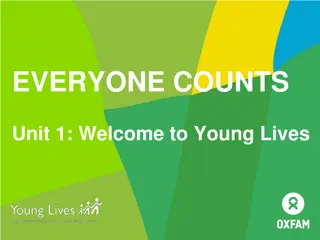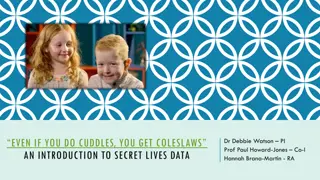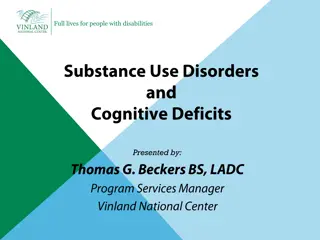Enhancing Lives through #ScienceSaves
#ScienceSaves campaign emphasizes the positive impact of science on life, promoting longevity, wellness, ease, and fulfillment. It showcases how science enables progress and enhances well-being in various aspects of existence. Join us in celebrating the wonders of science and the better future it brings!
Download Presentation

Please find below an Image/Link to download the presentation.
The content on the website is provided AS IS for your information and personal use only. It may not be sold, licensed, or shared on other websites without obtaining consent from the author.If you encounter any issues during the download, it is possible that the publisher has removed the file from their server.
You are allowed to download the files provided on this website for personal or commercial use, subject to the condition that they are used lawfully. All files are the property of their respective owners.
The content on the website is provided AS IS for your information and personal use only. It may not be sold, licensed, or shared on other websites without obtaining consent from the author.
E N D
Presentation Transcript
What is #ScienceSaves? What is #ScienceSaves? #ScienceSaves is a campaign to promote the fact that thanks to science, individual lives are longer, healthier, easier, and fuller. We hope this lesson helps your students understand how #ScienceSaves!
Dr. Charles Richard Drew Blood and Blood Typing Image: Scurlock Studio Records, ca. 1905 1994, Archives Center, National Museum of American History, Smithsonian Institution, from https://www.sciencehistory.org/historical-profile/charles-richard-drew
Who was Dr. Charles Richard Drew Have you ever heard of Dr. Charles Drew? Do you know anyone who has donated blood? If you know anyone or have had a blood transfusion, you have Dr. Drew to thank for his work in enhancing blood storage methods and raising the quality of blood transfusions. Video: Dr. Charles Drew (3 minutes) Image from: https://www.myblackhistory.net/Charles_Drew.htm
Blood Blood carries cells, dissolved nutrients, hormones, oxygen, carbon dioxide and urea around your body. It is a transport system. It is a connective tissue made up of different types of cells Red blood cells (erythrocytes) White blood cells (lymphocytes and phagocytes) Platelets And a liquid called plasma.
Blood Cells Red blood cells have a protein called hemoglobin which carries oxygen to cells and removes carbon dioxide. White blood cells destroy pathogens which cause diseases in the body. There are two types of white blood cells. Lymphocytes produce antibodies. Phagocytes engulf and destroy pathogens. Platelets release chemicals to make blood clot when you get cut making a scab.
Plasma Plasma is an important component of blood, but it is not a cell. It is a liquid. Image: https://my.clevelandclinic.org/health/body/22865-plasma
Blood Comes in Different Types The different types of blood were discovered by Dr. Landsteiner who one the Nobel Prize in Medicine in 1930. Dr. Richard Lewisohn contributed to making transfusion safer. It often take many scientists to solve problem. Heroes of Progress video Image from: https://www.nobelprize.org/prizes/medicine/1930/landsteiner/biographical/ Image from: https://www.scienceheroes.com/lewisohn-transfusion
ABO Blood Type Blood is typed based on the proteins (antigens) on the surface of red blood cells. The blood types are: Here is a quick explanation: Amoeba Sisters - Blood Types Video O A B AB And each can be + or -.
Can you predict blood type? Blood type is a codominant trait and you can use a Punnett Square. YES! Ameoba Sisters Blood Types and Punnett Squares
Once you know the blood type, you can determine who can receive which blood A blood transfusion is when blood from one person is given to another. If you get the wrong type of blood, it can be deadly.
Lets play a Blood Typing Game Nobel Prize Blood Typing Game Image from: https://educationalgames.nobelprize.org/educational/medicine/bloodtypinggame/
Review There are often several scientists who help with a discovery. Some scientists work with blood, blood typing, storage of donated blood and blood transfusions. There are four parts of blood: red blood cells, white blood cells, platelets and plasma. There are four blood types: A, B, AB and O. Blood can also be + or Rh. Blood types are important when performing a blood transfusion.
References: Origin of the word cardiac: https://www.etymonline.com/word/cardiac#:~:text=cardiac%20(adj.)&text=1600%2C%2 0from%20French%20cardiaque%20(14c,arrest%20is%20attested%20from%201950. [Accessed 25 September 2022]. Cardiac muscle information: https://www.ncbi.nlm.nih.gov/books/NBK535355/#:~:text=The%20individual%20cardiac %20muscle%20cell,units%20of%20the%20muscle%20cells. [Accessed 25 September 2022]. Tissues: https://byjus.com/questions/list-the-tissues-found-in-the-human-heart/ [Accessed 25 September 2022].
Teacher Notes: Dr. Charles Drew Summary: Students are introduced the components of blood, blood typing and the importance of blood typing in transfusions. Dr. Drew is introduced as being a science leader in enhancing blood storage the quality of transfusions. Lesson Length: 1 -2 class periods (55 minutes) Next Generation Science Standards (NGSS) Covered: MS-LS3 Heredity: Inheritance and Variation of Traits Common Core State Standards (CCSS) ELA Covered: RST.6.8.4 Determine the meaning of symbols, key terms, and other domain-specific words and phrases as they are used in a specific scientific or technical context relevant to grades 6-8 texts and topics.
This lesson was brought to you by ScienceSaves. The #ScienceSaves campaign demonstrates how science has benefited human progress and how it offers humanity the tools to address today s most pressing challenges.
